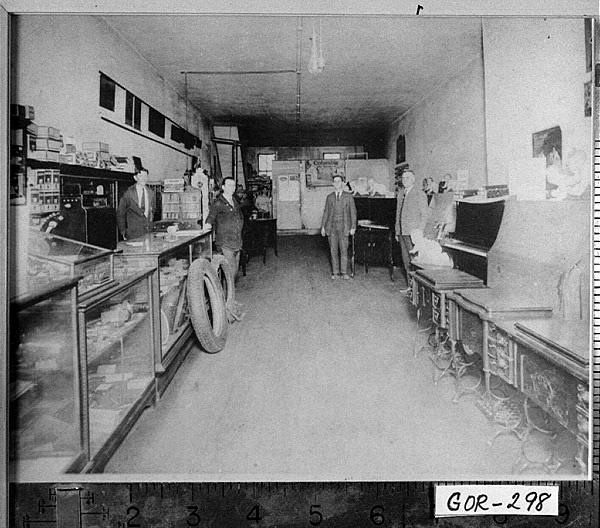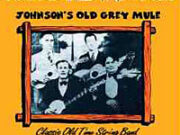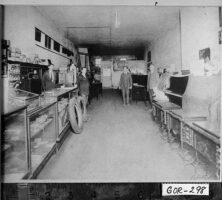The Georgia Yellow Hammers, an old-time fiddle string band from Gordon County, were active from the mid- to late 1920s. Members consisted variously of Bill Chitwood, Clyde Evans, Bud Landress, Charles Ernest Moody, Phil Reeve, and sometime recording associates Andrew Baxter, Jim Baxter, and Elias Meadows.
George Oscar “Bud” Landress was born in Gwinnett County in 1882 and moved to Gordon County in 1905. William Hewlitt “Bill” Chitwood, born in Resaca in 1891, was the youngest of twelve children. Chitwood’s older brother had a homemade fiddle that Chitwood sneaked out on occasion and learned to play. He also learned to play the banjo but never liked the guitar. Landress had the same versatility and also preferred the fiddle and banjo. During this period of pre-country southern music, the fiddle and banjo were predominant, and the guitar somewhat newfangled.
C. P. “Phil” Reeve, born in 1896 and the third member of the band, came to be business manager of both the Georgia Yellow Hammers and also of Andrew and Jim Baxter, fiddler and guitar player, respectively. The Baxters, who were African American, were also from Gordon County. Reeve’s father died in 1900, leaving Reeve’s mother to care for four small children. To support them she sold musical instruments. From age nine, Reeve drove a mule wagon around Gordon County delivering parlor pump reed organs. He even went to a school in Indiana to learn piano tuning and player piano maintenance. In 1906 his mother married Lawrence Moss, who owned Moss Music Company in Calhoun—subsequently a music center for the Yellow Hammers and others. Reeve’s stepfather encouraged him to stay in the music business. Somewhere Reeve had also learned to yodel. As can be heard on later records, his voice was somewhere between that of a Swiss yodeler and country music singer (and yodeler) Jimmie Rodgers.

Courtesy of Georgia Archives.
This was the heyday of recording, especially of the newly “discovered” hillbilly music. In 1925, before the Georgia Yellow Hammers began playing together, Chitwood and Landress traveled to New York to record for Brunswick Records. Chitwood played the fiddle and Landress the banjo on these recordings. They recorded “Hen Cackle” and less well known fiddle tunes, such as “Whoa Mule” and “Over the Sea.”
A religious music influence is strongly apparent in the Yellow Hammers’ recordings. The Calhoun Times of the 1920s reveals that religious singing was as popular in Gordon County as it was throughout the South. Newspapers often announced a “singing.” Landress was an officer in singing conventions. He read shape notes and sang a strong bass.
“Pass Around the Bottle” and “Fourth of July,” with their trio harmonizing (featuring Meadows as tenor, Landress as lead, and probably Chitwood as bass), set the style for the Yellow Hammers’ recordings. Only Chitwood and Landress sing on “Midnight Train,” and “Grey Mule” features Chitwood, who sings by himself with mule-snorting effects. Typical of the era, these recordings were made on a flat-fee, no-royalty basis—an arrangement the group was able to change from the next session onward.
The quartet reassembled for a couple of sacred selections, accompanied on pump reed organ by J. M. Barnette, issued under the name of the Turkey Mountain Singers. One of the tunes recorded by the Yellow Hammers at this time, and the only strictly instrumental selection, was “G Rag,” for which, as several sources have confirmed, Andrew Baxter took over the fiddling from Landress, who instead contributes the humorous spoken introduction. Baxter was an older Black fiddler who occasionally performed with the band, making the Yellow Hammers one of the few integrated bands of the time.
Also recorded at the 1927 session was the coupling “The Picture on the Wall” / “My Carolina Girl,” which proved far and away the best-selling record the Yellow Hammers ever had and one of the top sellers of the late 1920s southern market. The record became a hit and sold more than 60,000 copies in 1928 alone and probably more than twice that in all.
The Great Depression was hard on the record industry. It brought to an end not only the Yellow Hammers’ recordings but also the Moss music store, the center of so much music activity in Calhoun. Reeve went to work for the Georgia Department of Agriculture. The others, except Landress, turned to other work as well. Landress continued performing into the 1940s with a group called the Georgia Mountaineers, who also played over WRGA in Rome. Landress died in 1966, Reeve died in 1949, Chitwood died in 1961, Clyde Evans died in 1975, and Ernest Moody died in 1977.





